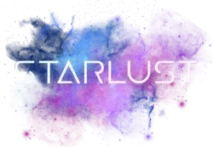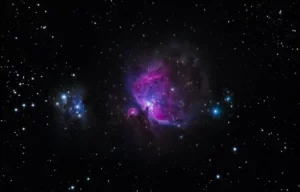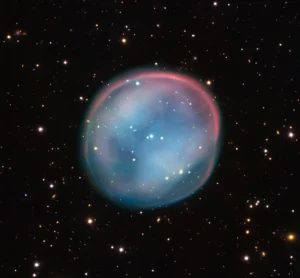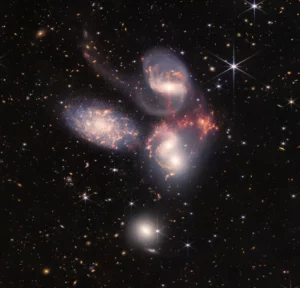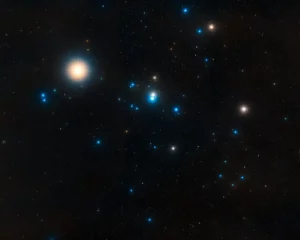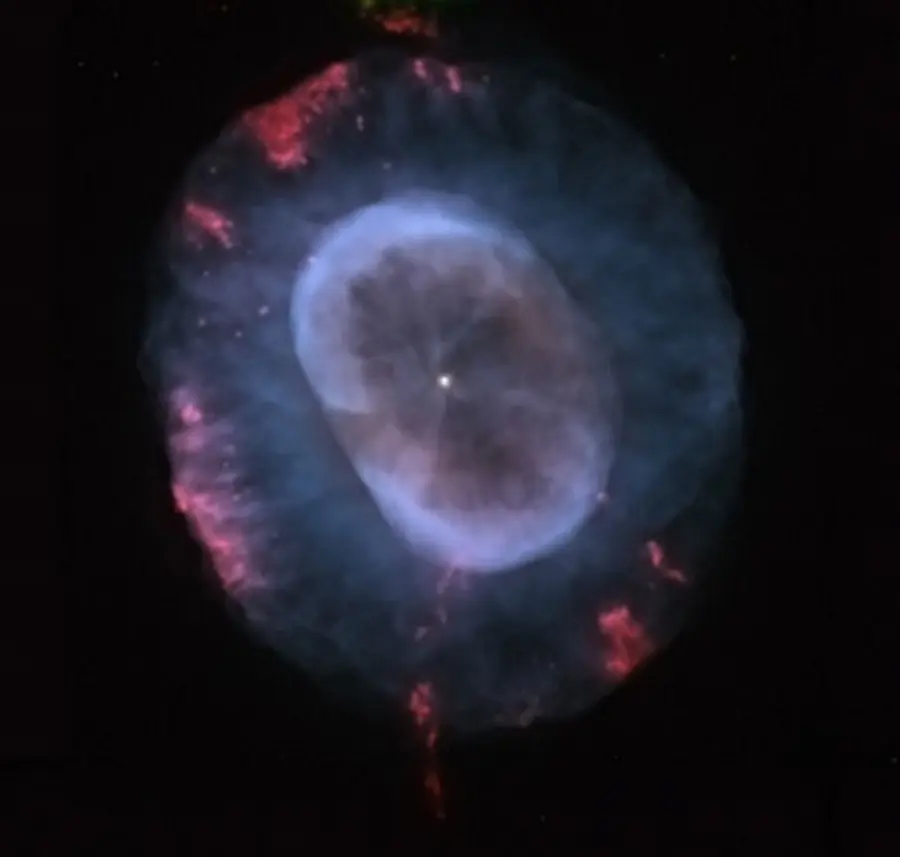
NGC 7662 – Planetary Nebula in Andromeda
NGC 7662 is a bright planetary nebula in Andromeda, one of the easiest objects of its type to see with small amateur telescopes. To find it, center your telescope on the 6th-magnitude star 13 Andromedae and you will have the nebula in the eyepiece’s field, half a degree southwest of the star.
A 2.4-inch scope shows NGC 7662 as a nearly stellar object of magnitude 8.5. With a 6-inch telescope and magnification of at least 100x, the nebula appears as a fuzzy blue disk with an elliptical outline.
Larger 10 and 12-inch telescopes reveal the darker central region, but the 13th-magnitude central star remains invisible.
The blue color of NGC 7662 is common in most planetary nebulae. Ultraviolet light coming from the hot central star excites the nebula’s gas, and the strong emission by oxygen in the gas produces the bluish hue.
Maybe you are wondering why the nebula doesn’t appear blue in this picture to the right. This is because the picture’s colors are not real, they were chosen to highlight the emission of certain ions in the nebula.
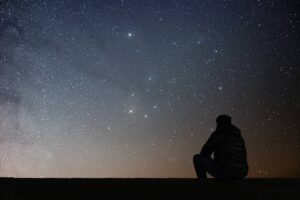
Emil, an avid astronomy writer, formerly owned and ran nightskyinfo.com, making the universe more comprehensible for his readers. He has recently handed over its reins to Tom Urbain from starlust.org, ensuring that his legacy of simplifying the stars continues to enlighten and inspire.
Discover More Deep Sky Objects to Observe🔭
This page is part of our collection of deep-sky objects articles. If you enjoyed the read, then you’ll love the following articles.
